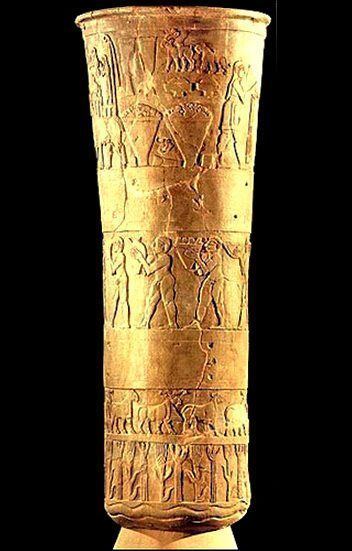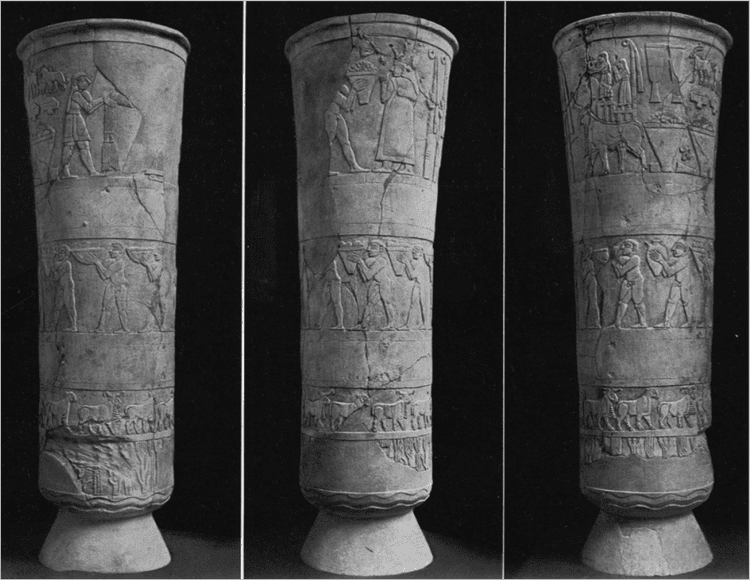 | ||
Similar Victory Stele of Naram‑Sin, Standard of Ur, Stele of the Vultures, Narmer Palette, Mask of Warka | ||
Warka vase
The Warka Vase is a carved alabaster stone vessel found in the temple complex of the Sumerian goddess Inanna in the ruins of the ancient city of Uruk, located in the modern Al Muthanna Governorate, in southern Iraq. Like the Uruk Trough and the Narmer Palette from Egypt, it is one of the earliest surviving works of narrative relief sculpture, dated to c. 3200–3000 BC.
Contents
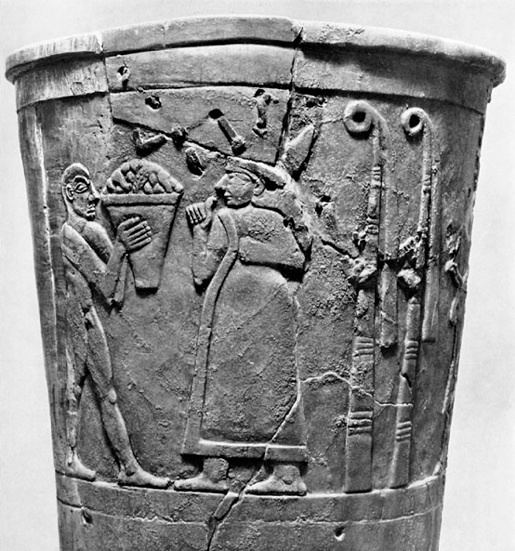
Discovery

The vase was discovered as a collection of fragments by German Assyriologists in their sixth excavation season at Uruk in 1933/1934. The find was recorded as find number W14873 in the expedition's field book under an entry dated 2 January 1929, which read "Großes Gefäß aus Alabaster, ca. 96 cm hoch mit Flachrelief" ("large container of alabaster, circa 96 cm high with flat-reliefs"). The vase, which showed signs of being repaired in antiquity, stood 3 feet, ¼ inches (1 m) tall. Other sources cite it as having been a slightly taller 106 cm, with an upper diameter of 36 cm. It is named after the modern village of Warka – known as Uruk to the ancient Sumerians. A plaster cast was made of the original and this reproduction stood for many decades in room 5 of the Near-Eastern Museum in Berlin (Vorderasiatisches Museum Berlin), Germany.
Decoration

The vase has four registers – or tiers – of carving. The bottom register depicts the vegetation in the Tigris and Euphrates delta, such as the natural reeds and cultivated grain. Above this vegetation is a procession of animals, such as oxen and sheep presented in a strict profile view. The procession continues in the second register with nude males carrying bowls and jars of sacrificial elements, such as fruit and grain. The top register is a full scene, rather than a continuous pattern. In this register, the procession ends at the temple area. Inanna, one of the chief goddesses of Mesopotamia and later known as Ishtar in the Akkadian pantheon, stands, signified by two bundles of reeds behind her. She is being offered a bowl of fruit and grain by a nude figure. A figure in ceremonial clothing – presumably a chieftain/priest – stands nearby with the procession approaching him from behind.
Theft and restoration

The Warka Vase was one of the thousands of artifacts which were looted from the National Museum of Iraq during the 2003 Invasion of Iraq. In April 2003 it was forcibly wrenched from the case where it was mounted, snapping at the base (the foot of the vase remaining attached to the base of the smashed display case.
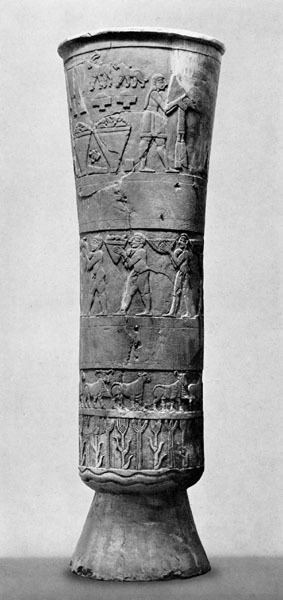
The vase was later returned during an amnesty to the Iraq Museum on 12 June 2003 by three unidentified men in their early twenties, driving a red Toyota vehicle. As reported by a correspondent for The Times newspaper,
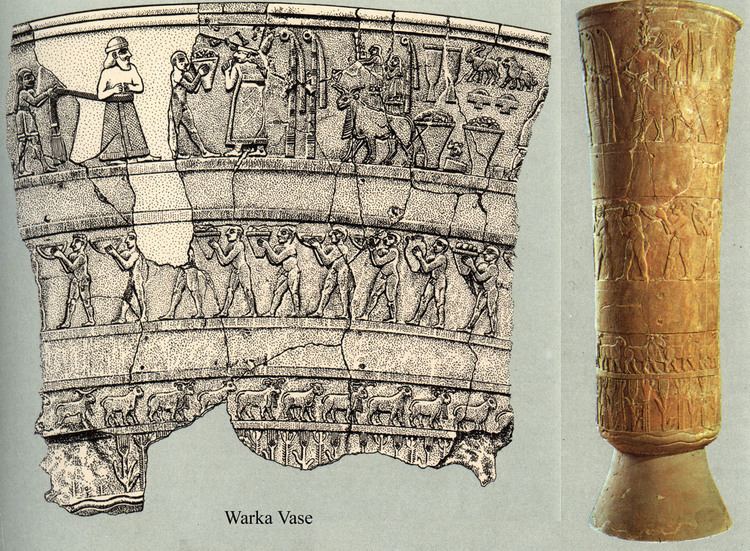
Soon after the vase's return, broken into 14 pieces, it was announced that the vase would be restored. A pair of comparison photographs, released by the Oriental Institute, Chicago, showed significant damage (as of the day of return, 12 June 2003) to the top and bottom of the vessel.
The fully restored Warka Vase (museum number IM19606) is now on display in the Iraq Museum.

